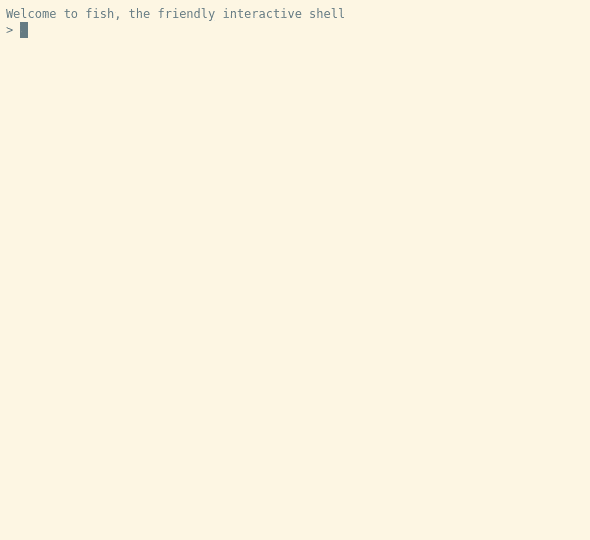kuksa.val is a part of the opensource project eclipse kuksa.
More about kuksa.val can be found in the repository.
kuksa_viss_client is a command-line test client which can be used to interact with the KUKSA val server
The fastest way to start using the kuksa-viss-client is to install a pre-built version with pip. Instructions on how to build and run locally can be found further down in this document.
pip install kuksa-viss-client
After you have installed the kuksa-viss-client package via pip you can run the test client directly by executing
$ kuksa_viss_clientIf everything works as expected and the server can be contacted you will get an output similar to below.
Welcome to kuksa viss client version <some_version>
`-:+o/shhhs+:`
./oo/+o/``.-:ohhs-
`/o+- /o/ `.. :yho`
+o/ /o/ oho ohy`
:o+ /o/`+hh. sh+
+o: /oo+o+` /hy
+o: /o+/oo- +hs
.oo` oho `oo- .hh:
:oo. oho -+: -hh/
.+o+-`oho `:shy-
./o/ohy//+oyhho-
`-/+oo+/:.
Default tokens directory: /some/path/kuksa_certificates/jwt
connectj to wss://127.0.0.1:8090
Websocket connected securely.
Test Client>The next step is to authorize against the server.
The jwt tokens for testing can either be found under kuksa_certificates/jwt or you can also use following command inside kuksa_viss_client to find the via pip installed certificate directory.
Test Client> printTokenDirSelect one of the tokens and use the authorize command like below.
Test Client> authorize /some/path/kuksa_certificates/jwt/super-admin.json.tokenRefer help for further information
VSS Client> help -v
Documented commands (use 'help -v' for verbose/'help <topic>' for details):
Communication Set-up Commands
================================================================================
authorize Authorize the client to interact with the server
connect
disconnect Disconnect from the VSS Server
getServerAddress Gets the IP Address for the VSS Server
setServerAddress Sets the IP Address for the VSS Server
Info Commands
================================================================================
info Show summary info of the client
printTokenDir Show token directory
version Show version of the client
Kuksa Interaction Commands
================================================================================
getMetaData Get MetaData of the path
getValue Get the value of a path
setValue Set the value of a path
updateMetaData Update MetaData of a given path
updateVISSTree Update VISS Tree Entry
This is an example showing how some of the commands can be used:
Using the testclient, it is also possible to update and extend the VSS data structure. More details can be found here.
Note: You can also use setValue to change the value of an array, but the value should not contains any non-quoted spaces. Consider the following examples:
Test Client> setValue Vehicle.OBD.DTCList ["dtc1","dtc2"]
{
"action": "set",
"requestId": "f7b199ce-4d86-4759-8d9a-d6f8f935722d",
"ts": "2022-03-22T17:19:34.1647965974Z"
}
Test Client> setValue Vehicle.OBD.DTCList '["dtc1", "dtc2"]'
{
"action": "set",
"requestId": "d4a19322-67d8-4fad-aa8a-2336404414be",
"ts": "2022-03-22T17:19:44.1647965984Z"
}
Test Client> setValue Vehicle.OBD.DTCList ["dtc1", "dtc2"]
usage: setValue [-h] Path Value
setValue: error: unrecognized arguments: dtc2 ]
For development purposes it may be necessary to customize the code for the client and run a locally built version.
The commands below can be used for that purpose. this will assure that local *.py files will be used when running the client.
cd kuksa_viss_client
pipenv shell
pipenv lock
pipenv sync
python __main.py__After testing you can use quit to exit the client and exitto exit the pipenv shell. In subsequent runs some parts can be skipped:
cd kuksa_viss_client
pipenv shell
python __main.py__You can build a docker image of the testclient using the Dockerfile. Not the most effcient way to pack a small python script, but it is easy to get started. The Dockerfile needs to be executed on the parent directory (so it include the needed certificates and pip package configuration).
cd /some/dir/kuksa.val
docker build -f kuksa_viss_client/Dockerfile -t kuksa-client:latest .To run the builded image:
docker run --rm -it --net=host kuksa-client:latest
--rm ensures we do not keep the docker continer lying aroind after closing the vss-testclient and --net=host makes sure you can reach locally running kuksa.val-server or kuksa-val docker with port forwarding on the host using the default 127.0.0.1 address.
If you would like to develop your own kuksa.val client,
you can use the python sdk to interact with the kuksa.val server in a very easy way.
import the sdk
>>> import kuksa_viss_client
>>> kuksa_viss_client.__version__
'<your version, e.g. 0.1.7>'
Setup a thread to connect with the kuksa.val server.
The following properties for the connection can be configured:
ipdefault: "127.0.0.1"portdefault: 8090insecuredefault:Falsecacertificatedefault: "../kuksa_certificates/CA.pem"certificatedefault: "../kuksa_certificates/Client.pem"keydefault: "../kuksa_certificates/Client.key"
>>> config = {}
>>> client = kuksa_viss_client.KuksaClientThread(config)
>>>
>>> # Start the client thread to connect with configured server
>>> client.start()
>>>
>>> # Close the connection and stop the client thread
>>> client.stop()
You have the following methods to interact with the kuksa.val server:
# Do authorization by passing a jwt token or a token file
def authorize(self, token, timeout = 2)
# Update VISS Tree Entry
def updateVISSTree(self, jsonStr, timeout = 5)
# Update Meta Data of a given path
def updateMetaData(self, path, jsonStr, timeout = 5)
# Get Meta Data of a given path
def getMetaData(self, path, timeout = 1)
# Set value to a given path
def setValue(self, path, value, timeout = 1)
# Get value to a given path
def getValue(self, path, timeout = 5)
# Subscribe value changes of to a given path.
# The given callback function will be called then, if the given path is updated:
# updateMessage = await webSocket.recv()
# callback(updateMessage)
def subscribe(self, path, callback, timeout = 5)

